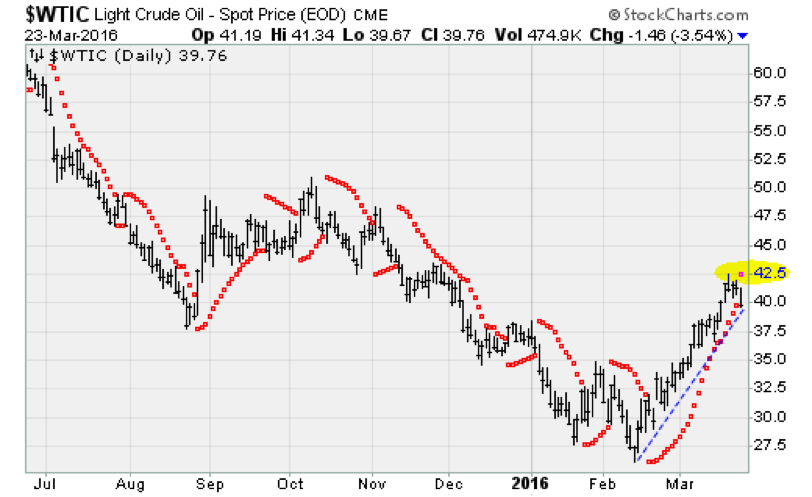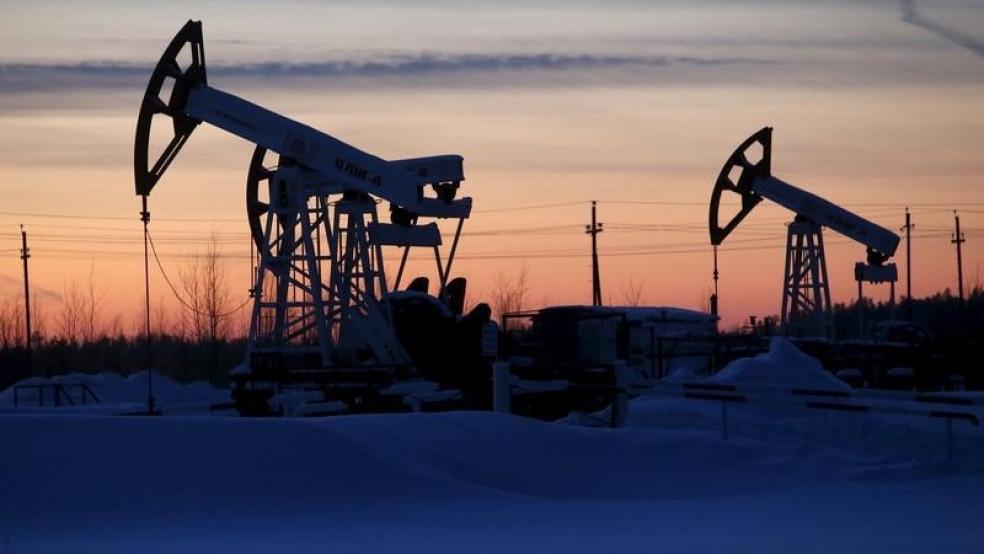The stock market rally since the Feb. 11 low has been predicated on two things. The first was the persistent hope of an OPEC/Russia deal to freeze crude oil supplies. The second was the even more persistent hope that the Federal Reserve isn't really serious about its claimed desire to normalize monetary policy with a series of regular interest rate hikes.
Crude oil led the way higher, surging more than 63 percent off of the intra-day low of $26.05 into a high of $42.29 set last week. Whenever the energy bulls lost enthusiasm, a random OPEC oil minster or political leader would drop a few choice comments, like on Feb. 25 when Qatar's energy minister, Mohammed Saleh Al Sada, said an output freeze could send prices back above the $50-a-barrel threshold within a year.
Related: Here’s How the Oil Bust Will Become the Next Boom
That's all under threat now as investors start to doubt the veracity of these two catalysts. On Wednesday, crude oil futures flashed a sell signal — based on a technical indicator called the parabolic stop-and-reverse — for the first time since early February as prices fell below the $40 threshold. Further declines look likely.

Oil's decline was blamed on headwinds from a lack of progress towards an OPEC/Russia deal — with the meeting already supposed to happen but now delayed to April — amid soaring inventory levels and a ramp up in Iranian output back toward pre-sanctions levels near 4 million barrels per day (see the chart below from Yardeni Research). According to the U.S. Energy Information Administration, crude oil stockpiles jumped 9.4 million barrels to a new record high, well ahead of the 3.1-million-barrel build that was expected.

The oversupply situation remains in full force, according to Yardeni, at levels not seen since February 1999. The growth is global oil demand is slowing. Oil production in the U.S. and Canada rose to a record high in February. Genscape, a provider of energy industry information, estimates that tanks in the Cushing, Oklahoma futures transfer hub are at operational capacity near 80 percent and could be full up — a so-called “tank tops" scenario — in June or July unless something changes.
Related: Why Market Insiders Don’t Believe the Recent Rebound Will Last
A new wrinkle comes from the futures market, where many traders took advantage of the deep "contango" that was in play back in February — i.e., the large difference between cash oil prices and oil for delivery in the future, which incentivized "rolling" crude via on- and off-shore storage. There is a cost inherent to this: The frictions of transportation, bunkering, insurance, brokering, etc. The arbitrage profit must also be juicy enough to compensate for the risk that prices move in the wrong direction.
But now, after cash oil prices rallied so strongly, Deutsche Bank analysts are noting a move to bring oil stored in offshore tankers back into the market. The risk-reward dynamic just isn't lucrative anymore. So traders are exiting their positions. According to the bank’s calculations, some 31 million barrels of oil are set to come onshore — which should be worth upwards of 330,000 barrels per day of additional incremental supply.
Recent hawkish chatter from Federal Reserve officials — talking up the odds of an April rate hike when Wall Street didn't expect action until June at the earliest — is contributing to the energy pullback by strengthening the greenback in a way that hasn't been seen since the start of the dollar’s October-December rally.
St. Louis Fed President James Bullard made the case for the April rate hike after commenting that inflation is likely to soon overshoot the Fed’s target. He added that the unemployment rate, currently at an eight-year low of 4.9 percent, would likely fall to 4.5 percent later this year. The change in tone has been so severe, in contrast to last week's "dovish hold" decision by the Fed, that CNBC wondered whether Janet Yellen's leadership is under threat.
Related: Why the Fed Might Still Shock Wall Street
While a reversal in energy prices will put the damper on the recent stock rally, there is a clear silver lining: Gas prices, which blitzed more than 70 percent higher at wholesale over the last month and a half, should drop back to late February levels and give consumers a few more dollars in their pockets.






